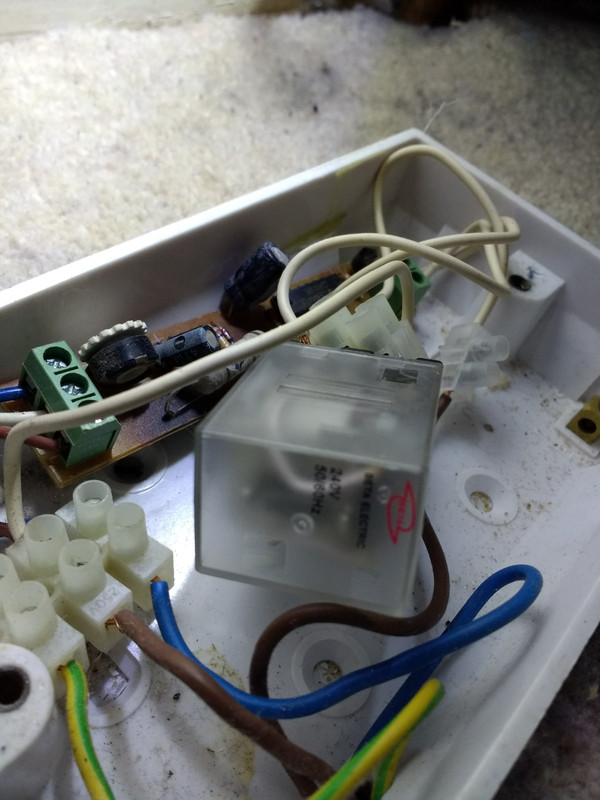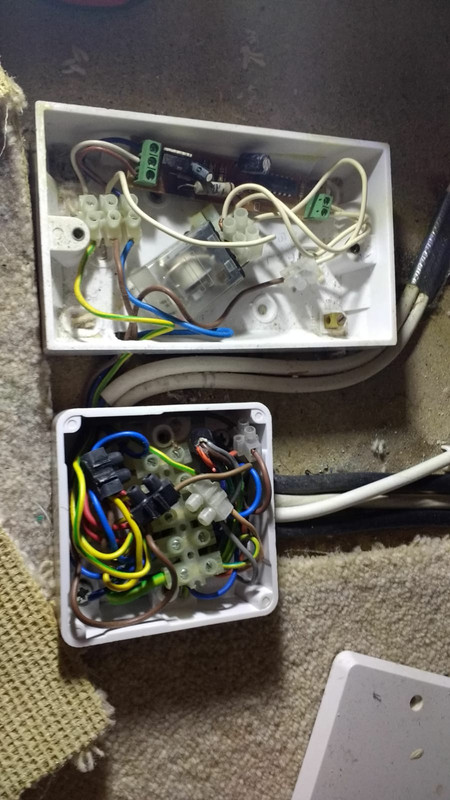Can anyone tell me what the relay pictured does? It comes on when the heating or hot water starts.
The relay is breaking down - clicking for minutes rather than a couple of seconds – and needs replacing.
It is connected to what an electrician friend tells me is a 4in fan PCB board (slight scorching on the board). The wiring from here then goes into another electrical box feeding the timer clock, x2 zone valves and a pump.
My friend doesn’t have time to come over due to work commitments but says it’s unusual – and two of his electrician colleagues have looked at pictures of it and neither have seen anything like it before. Two plumbers have looked at it and neither wanted to touch it.
An instruction on the electrical box says “white: trig”, which I presume to mean trigger, but for what? The house is approx 20 years old.
Despite the relay clicking for a long time, everything appears to be working as it should be.



The relay is breaking down - clicking for minutes rather than a couple of seconds – and needs replacing.
It is connected to what an electrician friend tells me is a 4in fan PCB board (slight scorching on the board). The wiring from here then goes into another electrical box feeding the timer clock, x2 zone valves and a pump.
My friend doesn’t have time to come over due to work commitments but says it’s unusual – and two of his electrician colleagues have looked at pictures of it and neither have seen anything like it before. Two plumbers have looked at it and neither wanted to touch it.
An instruction on the electrical box says “white: trig”, which I presume to mean trigger, but for what? The house is approx 20 years old.
Despite the relay clicking for a long time, everything appears to be working as it should be.




